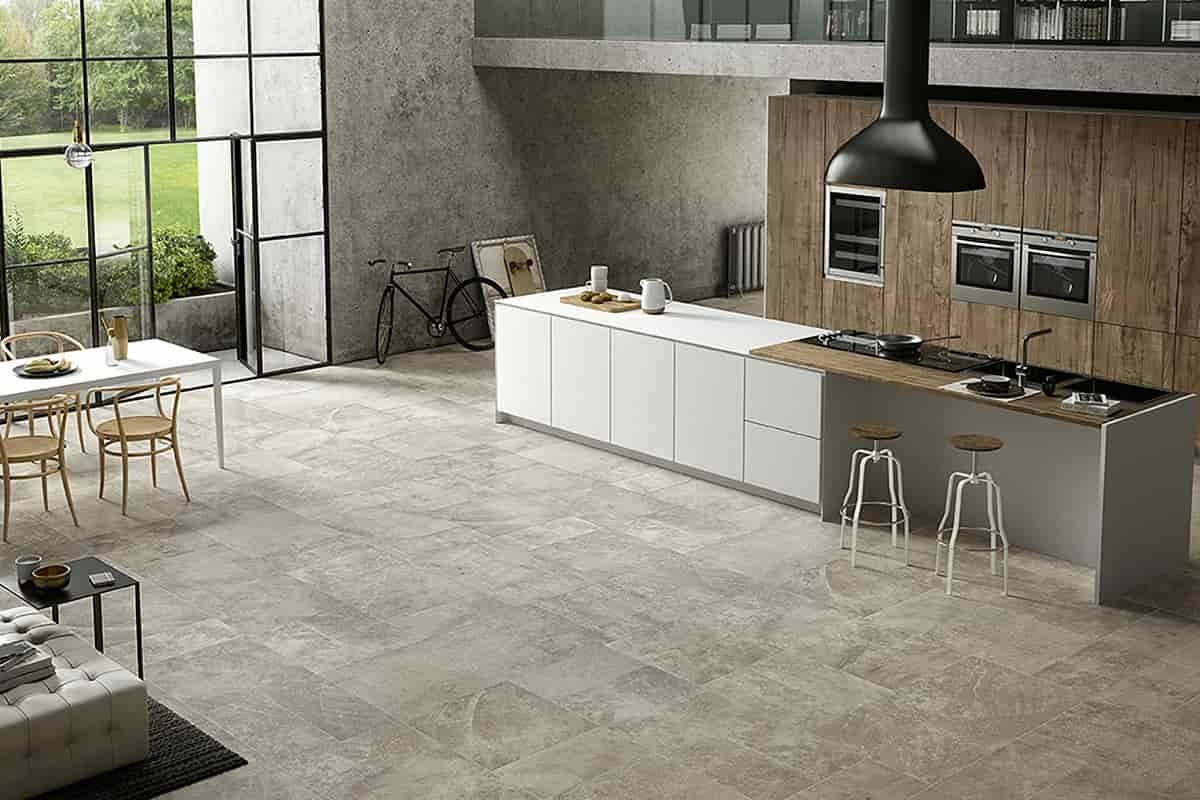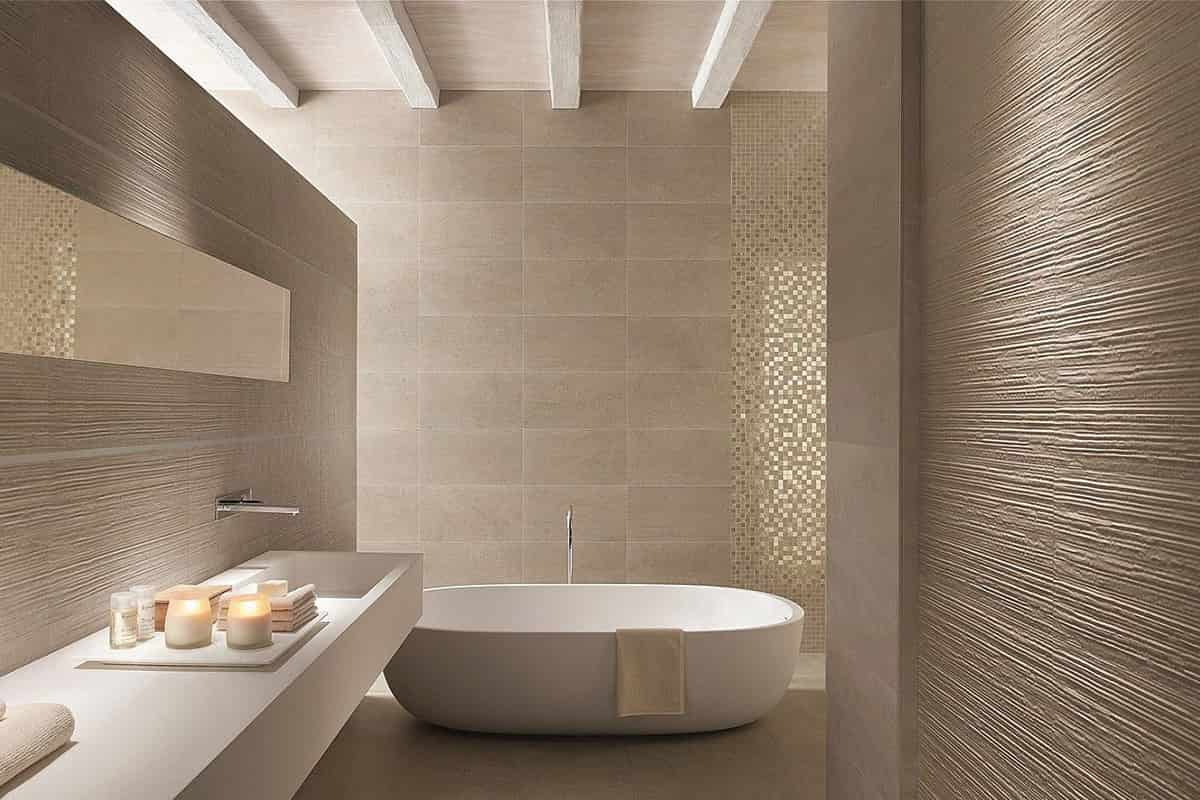Ceramic and natural stone tiles are two kinds of tiles that are very similar to one another. Both of them are durable hard-surface materials with similar properties. Both are equally installed, built of natural materials, and cared for to the same extent. Depending on where they are built, natural stone and ceramic tile each have their own advantages and disadvantages. But which one ought you to pick? In order to aid you in making the best choice, let's learn more about each one! What are ceramic tile and natural stone?The name of the tile is accurate: natural stone tile. It is a completely natural substance that came from the Earth and is not man-made. Natural stones come in a wide range of varieties, including slate, granite, marble, limestone, travertine, and sandstone.

The material used to create ceramic tiles is often red or white clay that has undergone kiln firing. There are two types of ceramic tile: glazed and unglazed. The glaze is used in the creation of the vast majority of ceramic tiles to form an impervious cover over the surface of the natural clay material. The glazed surface is durable, water-resistant, and remarkably stain-resistant. Additionally, it doesn't require any form of protective finish or sealer. Ceramic is actually what unglazed tile is when it's unglazed. It is quite porous and will quickly take stains and liquids. It is strongly advised to use a high-quality chemical, ceramic tile sealer to properly seal the tile as soon as it is put in order to eliminate all of those concerns. Ceramic vs. Natural Stone Tile: Pros and Cons Durability There are several different hardness ratings for ceramic tile. Look for tile with a higher PEI rating, especially one of 3 or above, for maximum durability. Lower PEI values are preferable for backsplashes and applications that won't be exposed to foot activity. Generally speaking, real stone is more resilient than porcelain when properly maintained, and wear and tear accentuate the qualities that give the stone its allure and charm.

Maintaining & Cleaning: Both ceramic tile and real stone need routine upkeep to stay in pristine condition. Both require routine cleaning, but there are differences in how you go about it. Because natural stone is porous, a sealer or glaze is needed to help plug the pores and make the stone stain- and water-resistant. Depending on the kind of natural stone you choose, the sealant may need to be repeated from time to time. Avoid using acidic cleansers on a regular basis because they could harm the stone itself. Glazed ceramic tile does not require an additional coating before usage. If you're concerned about stains, you could wish to seal the grout to keep it as spotless as the tile around it. Similar to natural stone, unglazed ceramic tile needs a sealer or top coat to prevent discoloration. Due to the sturdy glaze, ceramic tile can be cleaned with a wide range of cleaning agents. Color Differences: Which flooring—natural stone or ceramic tile—would best accomplish the desired effect for the room will depend on the design of your home. Crisp whites to rich beige and brown tones are just a few of the many natural color variations that are available in natural stone. The flooring's color will be influenced by the material that is selected.

Ceramic tile can be found in endless color and pattern combinations because it is man-made. Even the appearance of real stone or oak planks can be replicated. Finding ceramic tile that matches an interior décor is simply because of the wide range of colors available. Cost: Natural stone is one of the most expensive tile selections since, well, it's natural. Their opulent appearance makes the cost worthwhile if the money allows for it. One of the most economical possibilities today is ceramic tile. The cost varies according to the ceramic tile's grade, style, and finish. While less expensive than glazed tiles, unglazed tiles need an additional finishing step during installation. Considerations for Ceramic Tile and Natural Stone Installation On home improvement shows, tile installation receives much DIY attention and airtime, but in practice, it's not as quick and simple as it seems. To properly finish a project and keep its integrity requires a lot of time, perseverance, and talent. Therefore, it is definitely worthwhile to invest more money to hire an expert to handle the installation.

The tile installers will spend some time arranging the tiles when the project is first starting to approach the final design. Therefore, this is more of a strong endorsement than a con. It all boils down to knowing the advantages and disadvantages of each material when choosing which is ideal for your space. Prior to examining the materials, think about the space's general layout, how many people will be using it, and the daily demands it must withstand. To ensure that your room will continue to appear stunning for years to come, choose your tile carefully, and don't skimp on cleaning and maintenance. Keep in mind these key points as you browse our tile selection at one of our sites to make it even simpler: Ceramic tile flooring is inexpensive and simple to maintain. Although natural stone tiles are more expensive, they are more elegant and easier to clean. Beware of DIY home remodeling shows; it's best to leave tile installation to the experts.
